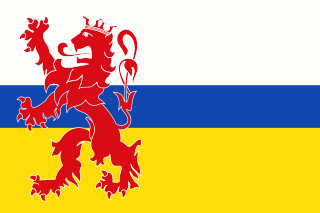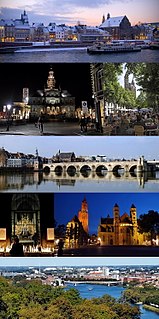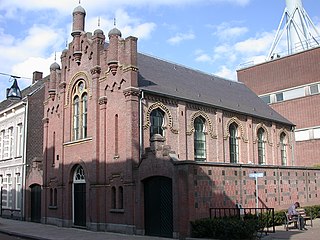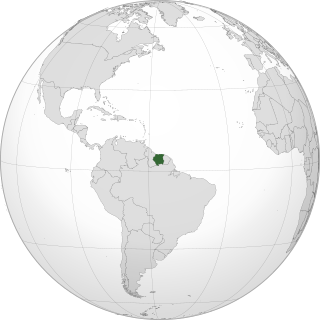External links
| Culture |
| |||||||
|---|---|---|---|---|---|---|---|---|
| Geography |
| |||||||
| Politics |
| |||||||
| Sports | ||||||||
| Transportation | ||||||||
The history of the Jews in Maastricht , Netherlands, traces back to the Middle Ages. A synagogue with a mikvah existed in the city before 1295. However, severe pogroms persuaded Jews to leave Limburg en masse. Hardly any Jews lived in Limburg between the years 1350 and 1650.
Jews were not free again to settle in the city of Maastricht until 1796, two years after French forces had occupied the city. Only Jews with considerable wealth had been allowed to live within the city borders before 1796.
The Jewish community grew considerably during the 19th century. A new synagogue opened in 1809; a Jewish school opened in 1833. Construction began in 1839 on an even larger temple, which opened in 1840.
The Jewish community suffered a decline in membership at the end of the 19th century, as Jews started to move to larger cities in the western part of the Netherlands, notably Amsterdam. Nevertheless, Maastricht retained a significant Jewish community, which went through a period of growth in the 1930s, when a large number of Jewish refugees from Nazi Germany and other Eastern European countries settled within the city.
A Zionist youth organization sprouted after the Nazis took over the Netherlands in 1940. Local police and fellow citizens protected the Jewish community for some time. However, they could not prevent the deportation of large parts of the community between June 1942 and April 1943. Most of the deportees were eventually killed in Auschwitz and Sobibor. Some Jews managed to hide, especially in the countryside; others fled across the border into Belgium.
The Jewish community had severely declined by the end of World War II. Jewish life reappeared after the liberation of Maastricht in 1944, and the synagogue of Maastricht, which had been ransacked and used as a storage depot during the war, was reopened in 1952. However, declining numbers of Jews in the city eventually led to the forced merger of the Jewish communities of Maastricht, Heerlen, Roermond and Venlo in 1986 to ensure the community's survival. Rabbi Ya'akov Shapiro was inaugurated in 2001 to serve the community, which is now the only existing Jewish community in the province of Limburg.
Number of Jews in Maastricht and surroundings:

Limburg is the southernmost of the 12 provinces of the Netherlands. The province is in the southern part of the country, stretched out from the north, where it touches the province of Gelderland. Its northern part has the province of North Brabant to its west. Its long eastern boundary is the international border with the German state of North Rhine-Westphalia. Much of the western and southern boundary is the international border with the Belgium, much of it delineated by the Meuse river, across from the Belgian Liège Province and the Belgian province also named Limburg. The Vaalserberg is on the extreme south-eastern point, marking the tripoint of the Netherlands, Germany and Belgium.

Maastricht is a city and a municipality in the southeastern Netherlands. It is the capital and largest city of the province of Limburg. Maastricht is located on both sides of the Meuse, at the point where the Jeker joins it. It is adjacent to the border with Belgium.

The history of religion in the Netherlands has been characterized by considerable diversity of religious thought and practice. From 1600 until the second half of the 20th century, the north and west had embraced the Protestant Reformation and were Calvinist. The southeast was predominately Catholic. Associated with immigration from North Africa and the Mideast of the 20th century, Muslims and other minority religions were concentrated in ethnic neighborhoods in the cities.

The history of the Jews in the Netherlands is considered to begin largely in the 16th century, when they began to settle in Amsterdam and other cities. It has continued to the present. Following the occupation of the Netherlands by Nazi Germany in May 1940, the Jewish community was severely persecuted. About 70% of its members were killed by the Nazis in the Holocaust during World War II.
As a result of the Alhambra Decree of 1492 and the Holy Office of the Inquisition, many Sephardim left the Iberian peninsula at the end of the 15th century and throughout the 16th century, in search of religious freedom. Some migrated to the newly independent Dutch provinces which welcomed the Sephardic Jews. Many of the Jews who left for the Dutch provinces were crypto-Jews, persons who had converted to Catholicism but continued to practice Judaism in secret. After they had settled in the safety of the Netherlands, many of them 'returned' fully to practice of the Jewish religion.
Eindhoven is a municipality and a city located in the province of Noord-Brabant in the south of the Netherlands, originally at the confluence of the Dommel and Gender brooks. The Gender has been dammed off in the post-war years, but the Dommel still runs through it.

The history of the Jews in Tilburg, Netherlands, did not start until 1767, when a Jewish citizen of the town Oisterwijk was given permission to settle in Tilburg, despite objections from the city council. Several Jewish families also succeeded in settling in Tilburg soon afterwards in 1791.
The Nederlands-Israëlitisch Kerkgenootschap (NIK) is the umbrella organisation for most Jewish communities in the Netherlands, and is Orthodox in nature, while to be described as traditional in outlook. The expression Orthodox, is for the Dutch situation at least, of a later date than the existence of the congregations that make up the NIK and the NIK itself. The Rabbi of the NIK is Rabbi Dr. Raphael Evers. In total, the NIK has some 20 rabbis actively working in 18 congregations throughout the country, serving some 5,000 Jews.

The Nederlands Verbond voor Progressief Jodendom is the umbrella organisation for Progressive Jews in the Netherlands, and is affiliated to the World Union for Progressive Judaism. It was founded in 1931.
The Jewish presence in north east England is focused on a number of important towns.

The Portuguese Synagogue, also known as the Esnoga, or Snoge, is a late 17th-century Sephardic synagogue in Amsterdam, completed in 1675. Esnoga is the word for synagogue in Ladino, the traditional Judaeo-Spanish language of Sephardic Jews.
The Mediene is the name given to all the Jewish kehillot in the Netherlands outside of the capital Amsterdam, the historical center of Dutch Judaism. From the 18th century onwards up until the Holocaust, dozens of Jewish communities were created in towns big and small scattered throughout the Netherlands. At its height, some 180 kehillot existed throughout the country.
Amsterdam has historically been the center of the Dutch Jewish community, and has had a continuing Jewish community for the last 370 years. Amsterdam is also known under the name "Mokum", given to the city by its Jewish inhabitants. Although the Holocaust deeply affected the Jewish community, killing some 80% of the some 80,000 Jews at time present in Amsterdam, since then the community has managed to rebuild a vibrant and living Jewish life for its approximately 15,000 present members. Six of Amsterdam's mayors were Jewish. Job Cohen was runner-up for the award of World Mayor in 2006.

Jewish ghettos in Europe were neighbourhoods of European cities in which Jews were permitted to live. In addition to being confined to the ghettos, Jews were placed under strict regulations as well as restrictions in many European cities. The character of ghettos fluctuated over the centuries. In some cases, they comprised a Jewish quarter, the area of a city traditionally inhabited by Jews. In many instances, ghettos were places of terrible poverty and during periods of population growth, ghettos had narrow streets and small, crowded houses. Residents had their own justice system. Around the ghetto stood walls that, during pogroms, were closed from inside to protect the community, but from the outside during Christmas, Pesach, and Easter Week to prevent the Jews from leaving at those times.
Groningen has always been the largest town in the northern part of the Netherlands, resulting in a significant settlement of Jews throughout its history. The community reached a high of some 2,700 members at the beginning of the 20th century. Only a small part of the 2,400-strong community in 1941 managed to survive the Holocaust. Jewish life nevertheless continued after the war, and there is still a Jewish community present, aligned to the NIK.
The Jodenbuurt is a neighborhood of Amsterdam, Netherlands. For centuries before World War II, it was the center of the Jews of Amsterdam — hence, its name. It is best known as the birthplace of Baruch Spinoza, the home of Rembrandt, and the Jewish ghetto of Nazi occupation of the Netherlands.
Leipzig, a city in the German state of Saxony, has historically been a center for Jews. Jewish communities in Leipzig existed as early as the 13th century. Discrimination against the Jews of Leipzig was recorded as early as 1349 and perpetuated under Nazi influence. Despite mass Jewish deportations and emigration forced by the Nazis in the 1930s and 1940s, Leipzig's Jewish community began to grow again in 1945 and continues to grow today.

The history of the Jews in Suriname starts in 1639, as the English government allowed Spanish and Portuguese Jews from the Netherlands, Portugal and Italy to settle the region, coming to the old capital Torarica.
The following is a timeline of the history of the municipality of Maastricht, Netherlands.
Jacob Hiegentlich was a gay Dutch poet of Jewish descent. He committed suicide in 1940, at age 33, days after the German invasion of the Netherlands.